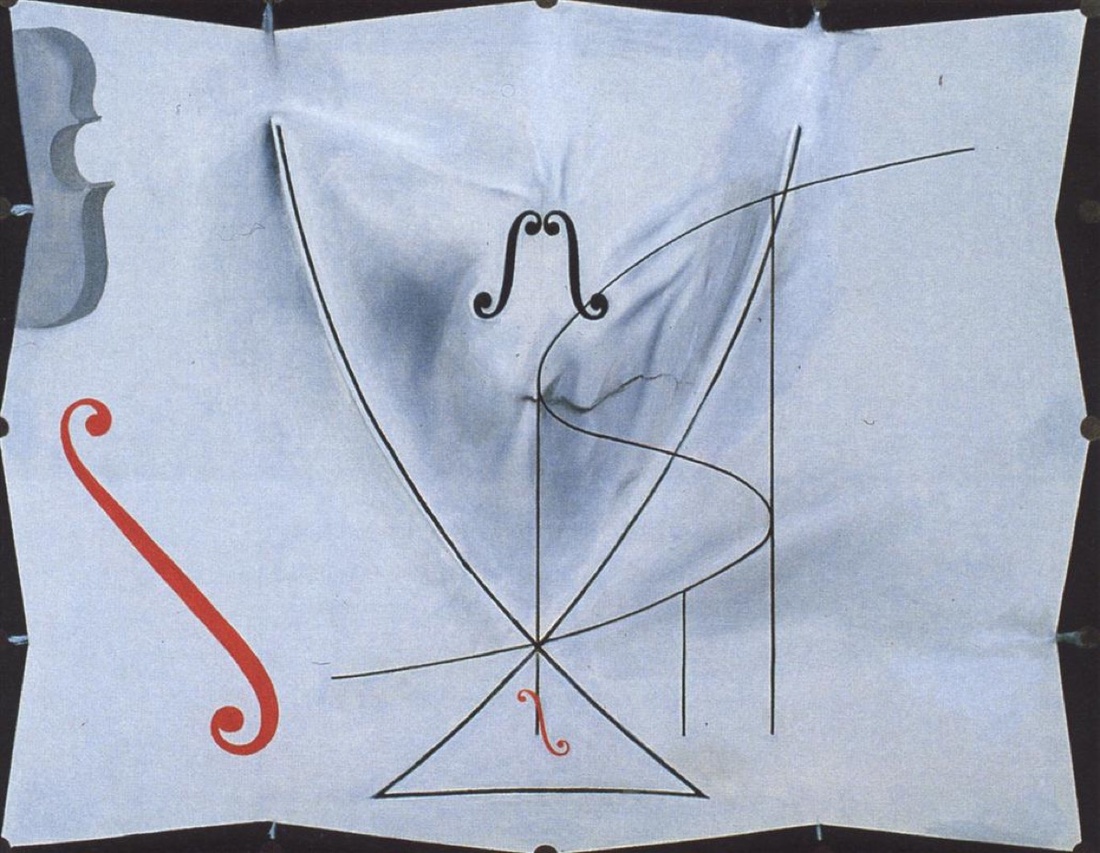
Salvador Dalí, The Swallow’s Tail, 1983
 Salvador Dalí, The Swallow's Tail, 1983. Courtesy of the Dalí Theatre and Museum, Figueres, Spain.
Salvador Dalí, The Swallow's Tail, 1983. Courtesy of the Dalí Theatre and Museum, Figueres, Spain.
The perplexing works of Surrealist master Dalí are more readily associated with psychoanalysis and Freud than with mathematics. Yet his last painting (he may have created bronze works later, but issues surrounding their reproduction make their origins difficult to pinpoint) was inspired by the “catastrophe theory” formulated by 20th-century French mathematician René Thom. It attempted to predict the occurrence of abrupt phenomena in the world.
The theory appealed both to Dalí’s aesthetic sensibility and to his longtime fascination with time, as evidenced by his iconic melting clocks. The last work in a series related to the theory, The Swallow’s Tail references the shape of one of the graphs that Thom used to describe events in four dimensions. The symbolic cello at the painting’s top left is doleful, and Dalí—whose wife had passed away the previous year—combines anguish and allure in this last painting.
沒有留言:
張貼留言